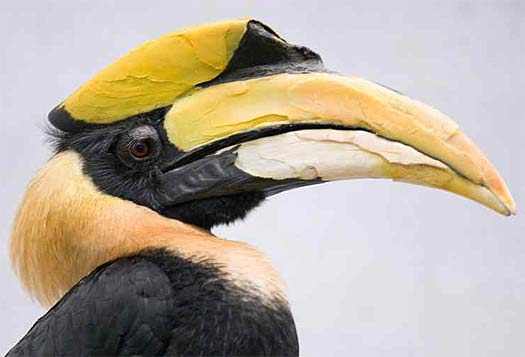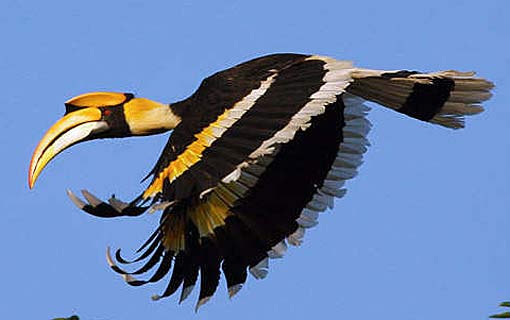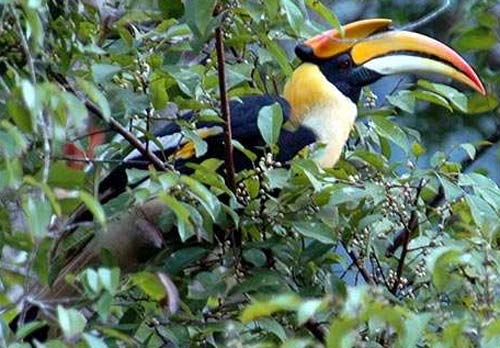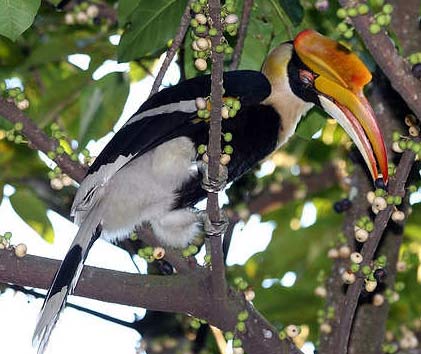Great Hornbill – Large Bird, Large Bill

Native to the forests of Nepal, India, the Malay Peninsula, Thailand, and Sumatra, Indonesia; the great hornbill is a bird know for its large size and bright coloration, which has made them popular in the tribal cultures and rituals of local tribes. The large bird is commonly 38 to 47 inches (95 to 120 centimeters) long, with a wingspan of 60 inches (152 centimeters), and a weight of 4.7 to 8.8 pounds (2.15 to 4 kilograms); this makes it the heaviest, but not the longest of all Asian hornbill species. Another trait that sets the great hornbill apart from other birds is its extremely long life-span (they can live up to 50 years in captivity).

The great hornbill is known best for its bright yellow and black casque on top of its massive bill, which appears u-shaped when seen from the front. There is apparently no real purpose for the casque, but males have been known to butt casques in the air as some sort of dominance showing.

Great hornbills are primarily frugivores, eating figs and other foraged fruit, but they’re also opportunistic and have been known to occasionally eat smaller birds when the opportunity arises. They get their water from the fruit they eat, and therefore never have to find other sources of hydration. As a result of habitat loss and hunting by tribesmen (they use the beaks for trinkets and the meat for its supposed medicinal purposes), the bird is considered to be near-threatened for extinction; therefore, there are currently numerous conservation efforts in place.

